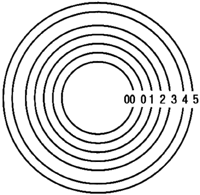
SELECTION CRITERIA: A PRIMER
A Series of 8 Tripod Types: Each tripod has been designed especially to withstand a specified maximum weight of equipment, which is assessed as being placed above the center of gravity of a fully extended tripod. The diameter of the top tripod leg section is the key to this and determines the Series range, weight loadings and to a degree applications.
When 10 lbs. is not 10 lbs. For those using a telescope or other load on our
tripod and head to understand that weight
loading alone does not determine the total payload ability of a stand. The length of a
load, particularly when it is when in
motion exerts not only an effect of the weight but also a leverage. Most tripods are
design to support a static load; their
ability to withstand lateral forces exerted such as when panning left to right with a
telescope may result in lowered
capacity. Furthermore, tripods are typically rated for cameras which even with an ultra
telephoto lens rarely exceed 20X;
while a telescope may be used at magnifications well in excess of this. So it is
important to use weight payload ratings as a
guideline. Call us for specific advice relating to use of your telescope or binocular
with any stand.
 What do the numbers mean? The first numeral of the product reference
refers to the
top leg diameter (shown to the right
magnified by 2X for clarity). This helps you to match the correct ancillary equipment to
your tripod.
What do the numbers mean? The first numeral of the product reference
refers to the
top leg diameter (shown to the right
magnified by 2X for clarity). This helps you to match the correct ancillary equipment to
your tripod.
So to choose the correct head, you simply match the first reference number of the head to the first reference number of the tripod. For example: a G375, or a G376 head will match a G320 tripod (for heads with four numbers, please use the second numeral, eg: G1276 would be a "2" series.
These Series number equate to tube diameters of:
| Series Name | Series Reference | Diameter (Inches) |
| Table | 00 | 5/8 (0.63) |
| Weekend | 0 | 3/4 (0.75) |
| Sport | 1 | 7/8 (0.88) |
| Reporter/Mountaineer | 2 | 1-1/8 (1.13) |
| Studex & Inter Pro Studex | 3 | 1-1/4 (1.25) |
| Pro Studex | 4 | 1-1/2 (1.5) |
| Tele Studex | 5 | 1-5/8 (1.63) |
The areas of concern to one selecting a system may be:
- Arm (Lateral) Type: Rapid (sliding locking), or Geared Control
- Central Column Sections: how many sections in central column
- Closed Height: to top of tripod with legs fully extended and spread
- Column Type: No Central Column, Rapid (sliding locking), or Geared Control
- Head Plate Size: dimensions of the mounting plate
- Lateral Tilt: movement to the sides
- Maximum Height: to top of tripod with legs fully extended and spread
- Maximum Load (given here in lbs.): static payload capacity
- Minimum Height: to top of tripod with legs fully retracted and spread
- Pan: movement in azimuth (left or right)
- Telescopic Leg Sections: how many extending leg sections
- Top Tube: diameter of platform at top of tube (monopods)
- Travel: movement distance of Lateral Arms
- Tripod Series: tripod leg diameter (discussed above)
- Vertical Tilt: movement in elevation (up or down)
- Weight (given here in lbs.): weight of the item, not the payload
Contents Copyright 1994-2000 Company Seven - All Rights Reserved

